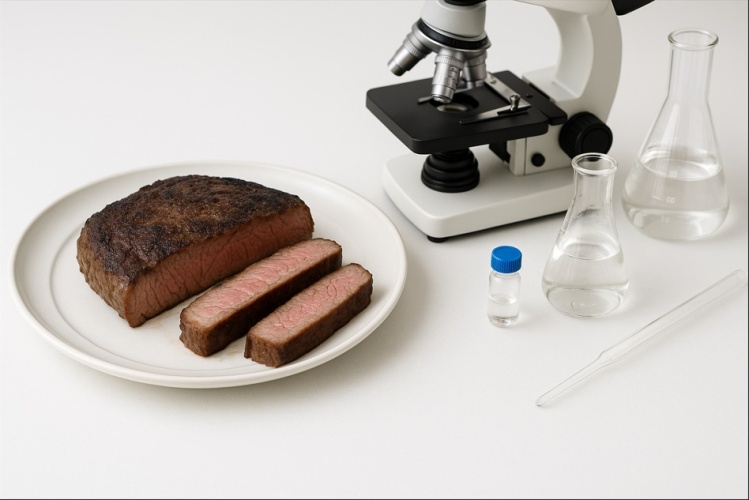What’s Lurking in Your Steak? Scientists Detect Hidden Cancer-Linked Chemicals in Popular Meats

A new scientific study has revealed that certain types of cooked meat, especially lamb and beef steak, contain hidden cancer-linked chemicals known as heterocyclic aromatic amines (HAAs)—toxins that form when meat is cooked at high temperatures.
Using a newly developed, super-sensitive lab method, researchers were able to detect even the tiniest traces of these potentially harmful compounds in common steak samples. This breakthrough technique could pave the way for safer food testing and better consumer awareness in the future.
The study not only confirmed the presence of four key HAAs—including MeIQx, MeIQ, IQ, and PhIP—but also found that lamb steak contained the highest level of one particularly concerning chemical. Scientists say that even small amounts of these compounds, if consumed regularly, could pose health risks over time.
The new testing method is faster, more accurate, and requires much smaller sample sizes than previous approaches—making it ideal for analyzing complex food products like cooked meats.
Main Findings:
- Carcinogenic HAAs found in steak, lamb, and beef samples
- Lamb steak showed the highest levels of MeIQx (up to 877.97 ng/g)
- Beef steak had the lowest level of MeIQ (10.08 ng/g)
- New method combines microwave digestion + electromembrane extraction + HPLC
- High accuracy (91–95% recovery), low detection limits (1.4–1.6 ng/g)
- Fast results with minimal sample and solvent use
Article: “Three liquid phase membrane extraction method based on the electro-migration assisted by high-performance liquid chromatography for the analysis of carcinogenic heterocyclic aromatic amines in steak samples”
Author: Nabi Shariatifar
Professor of Food Safety and Hygiene
Department of Environmental Health Engineering, School of Public Health
Tehran University of Medical Sciences
Journal: Food chemistry
IF: 8.5
https://pubmed.ncbi.nlm.nih.gov/39667300/
https://www.doi.org/10.1016/j.foodchem.2024.142037
science-communication@tums.ac.ir

Your Comment :